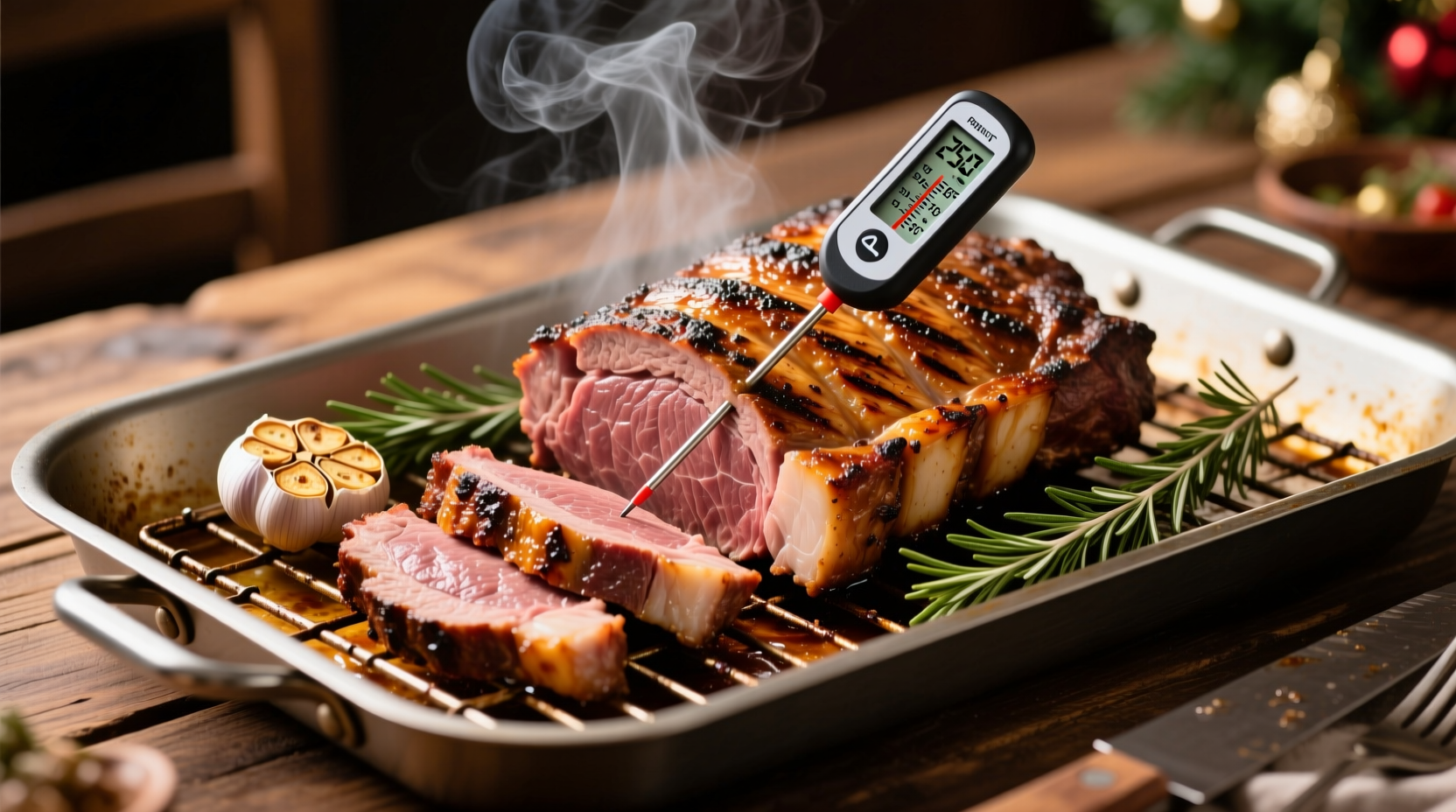There's nothing quite like a perfectly cooked prime rib for special occasions, but achieving that ideal medium-rare center with a beautiful crust can feel intimidating. Cooking prime rib at 250°F—a low-and-slow approach—takes the stress out of roasting while delivering exceptionally tender, evenly cooked meat. Unlike high-heat methods that risk overcooking the exterior before the interior reaches temperature, this gentle technique ensures your prime rib emerges with a rosy pink center from edge to edge.
Why 250°F Is the Sweet Spot for Prime Rib
Professional chefs have embraced low-temperature roasting for prime rib because it addresses the fundamental challenge of cooking this cut: its uneven thickness. The rib section contains both dense muscle and generous marbling, which respond differently to heat. At 250°F, the roast cooks gradually enough that the temperature gradient between exterior and interior remains minimal. This prevents the dreaded gray band that forms when meat cooks too quickly.
Food science confirms this approach. According to research from the USDA National Institute of Food and Agriculture, proteins in meat begin to denature at 105°F, with collagen converting to gelatin between 160-205°F. The 250°F method allows this transformation to occur evenly throughout the roast without accelerating moisture loss.
Prime Rib Cooking Time Chart: Your Essential Reference
| Roast Weight | Bone-In Time | Boneless Time | Target Internal Temp |
|---|---|---|---|
| 4-5 lbs | 1h 45m - 2h 15m | 1h 30m - 2h | 120-125°F |
| 6-7 lbs | 2h 30m - 3h | 2h 15m - 2h 45m | 125-130°F |
| 8-10 lbs | 3h 30m - 4h 30m | 3h - 4h | 130-135°F |
| 12-14 lbs | 5h - 6h | 4h 30m - 5h 30m | 135-140°F |
Note: Times assume starting from refrigerator temperature (40°F). Add 30-45 minutes if bringing meat to room temperature first. Always verify with an instant-read thermometer.
Step-by-Step Cooking Process
Preparation (24 Hours Before)
For optimal results, salt your prime rib generously 24 hours before cooking and leave it uncovered in the refrigerator. This dry brine process seasons the meat deeply and dries the surface for better browning. Remove the roast from the refrigerator 2-3 hours before cooking to reduce the temperature differential.
Cooking Phase
- Preheat oven to 250°F with rack positioned in the center
- Place roast fat-side up on a rack in a roasting pan
- Insert oven-safe meat thermometer into the thickest part
- Cook undisturbed until thermometer reads 15°F below your target final temperature
- For medium-rare, remove at 115-120°F (temperature will rise during resting)
The Critical Resting Period
Never skip resting! Tent loosely with foil and let the roast rest for 30-45 minutes. During this time, the internal temperature will continue rising 5-10°F (carryover cooking), and the muscle fibers will reabsorb juices. Cutting too soon releases precious moisture onto your cutting board.
Context Boundaries: When This Method Works Best
While the 250°F method produces exceptional results for standard prime rib roasts, certain scenarios require adjustments:
- Small roasts under 4 pounds: Consider increasing temperature to 275°F to prevent overcooking during resting
- Convection ovens: Reduce temperature by 25°F as circulating air cooks faster
- High-altitude cooking: Above 3,000 feet, increase cooking time by 25% due to lower boiling point
- Thermometer accuracy: Always calibrate your thermometer in ice water (32°F) before use
Avoid These Common Mistakes
Even with perfect timing, these errors can ruin your prime rib:
- Opening the oven too frequently: Each peek drops the temperature significantly—use the oven light instead
- Skipping the sear: For optimal crust, increase oven to 500°F for the final 10-15 minutes
- Cutting against the grain: Always carve perpendicular to the rib bones for maximum tenderness
- Insufficient resting time: Cutting too soon releases up to 40% of the juices according to University of Illinois Extension food science research

Temperature Timeline: What Happens Inside Your Roast
Understanding the internal transformation helps you become a better roaster:
- 105°F: Myoglobin begins denaturing (meat starts changing from red to pink)
- 120°F: Medium-rare begins (soft texture, warm red center)
- 130°F: Ideal medium-rare (slightly firmer, pink center)
- 140°F: Medium (warm pink center, increased firmness)
- 150°F: Well-done threshold (gray throughout, significant moisture loss)
Remember that the USDA recommends a minimum internal temperature of 145°F for beef roasts with a 3-minute rest, though many chefs and food safety experts agree that medium-rare (130-135°F) is safe when proper handling protocols are followed.
Final Pro Tips for Prime Rib Perfection
- Place a pan of water on the oven's bottom rack to maintain moisture during long cooking
- For extra flavor, rub with garlic paste and fresh rosemary before cooking
- Use a wireless thermometer to monitor temperature without opening the oven
- Save the drippings for the most flavorful au jus you've ever tasted











 浙公网安备
33010002000092号
浙公网安备
33010002000092号 浙B2-20120091-4
浙B2-20120091-4